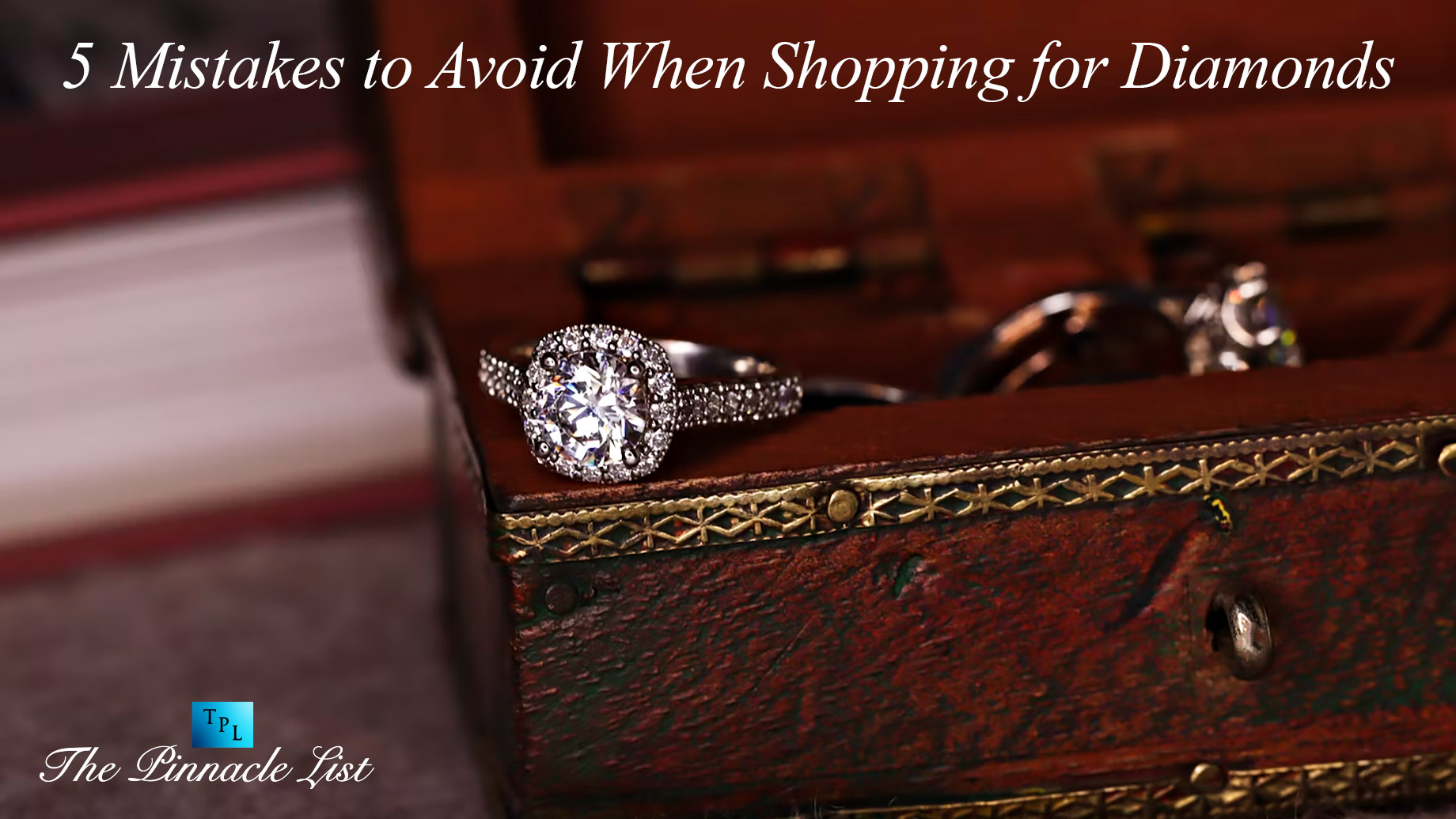
Known for their intrinsic value, diamonds are a worthy investment. Yes, they’re shiny, sparkly and all things that get a woman’s heart beating faster, but a rushed purchase can put a damper on things.
Diamond experts will tell you they’ll never encourage anyone to buy a diamond without being fully aware of the quality and investment value. Like buying a new car, there are various factors to consider before parting with your cash.
Whether purchasing a diamond to accompany a piece of jewelry or for investment purposes, you must avoid the following mistakes.
1. Not Buying Within Your Budget
It can be tempting to go for the biggest sparkler when you first step into a jewelry store. Don’t do it.
Setting a budget ensures you’re not rushing into big purchases and ending up with a debt you didn’t foresee. If you have a price range, the jeweler will know exactly what they’re working with and can steer you in the right direction.
Forget the “guidelines” about spending two months’ salary on an engagement ring, says CNBC. Just a simple marketing ploy made up by a well-known diamond company (cough, cough).
2. Buying the Wrong Sort of Diamond
A jeweler or diamond supplier will have your best interests at heart. They should be honest about the 4 Cs and how it affects your purchase.
Some diamonds are easier to resell, but if you’re buying something you love, why not invest in a pair of diamond studded earrings or a diamond ring? With that being said, you must be made aware of diamond imperfections.
These inclusions can affect the clarity grade. Although it’s not the most important of the 4 Cs (color, clarity, cut and carat weight), diamond clarity does affect the value of the diamond.
The GIA (Gemological Institute of America) clarity scale measures the imperfections. Magnification tools can magnify diamonds up to 30 times to find any imperfections.
Leibish says each inclusion, external and internal, is noted on your GIA diamond certificate.
3. Not Certifying Your Diamond
Natural diamonds and their lab-grown counterparts undergo the same rigorous testing to identify their worth.
Diamond testing labs like the GIA and International Gemological Institute (IGI) grade mined and lab diamonds. Sophisticated machinery tests diamonds numerous times as they move through the supply chain.
In addition to certifying diamonds, some labs laser-inscribe lab-grown diamonds with a report number.
4. Opting For the Bargain Deal
There are dodgy diamond dealers out there and that’s why it’s best to stay away from those who don’t come highly recommended. If a deal sounds too good to be true, it probably is not really that great.
Some customers think they can haggle the price. The price tag you see is what you’re going to pay. There are no backdoor deals to be made when it comes to buying these precious pieces.
De Beers sets the diamond prices. The retailer adds their markup and that’s how the overall cost is factored in. If it’s a bargain you’re looking for, watch out for seasonal deals from large retail stores.
5. Not Considering Clarity and Color Grading
Everyone would love a flawless diamond. It’s not always possible. An excellent vendor well-versed in grading will advise you on which clarity and color to go for, depending on your budget.
Diamonds graded from D to F are considered “colorless.” Most affluent buyers tend to stick within this range. G to J is regarded as “near colorless” and appears white to the naked eye.
Mounted diamonds often conceal flaws. Diamond experts suggest you inspect it with a magnifier unless it includes GIA certification with a report on the stone’s clarity and color.
Deep-cut diamonds can come at a lower cost. But they do have more carat weight in their depth rather than their width. When the stone is in a mounted setting, it’s hard to tell the depth and cut. Once again, you must be vigilant as it’s easy to purchase a 1.00-carat diamond that appears to be .90-carat due to its deep cut.
Before You Go
When purchasing diamonds, choose a reputable diamond vendor or jeweler and inform them of how you plan to use them.
Make them aware of your budget so you don’t waste their time and yours. Know your 4 Cs to help you make an informed decision. Look out for diamond inclusions and diamond quality. And, if an online deal is too good to be true, stay far away from it.